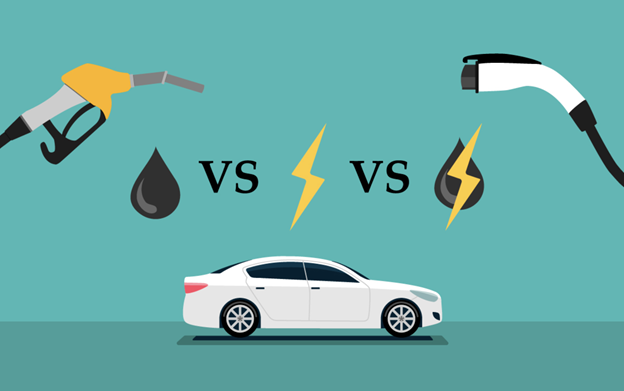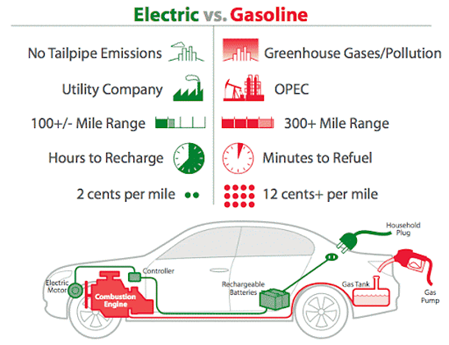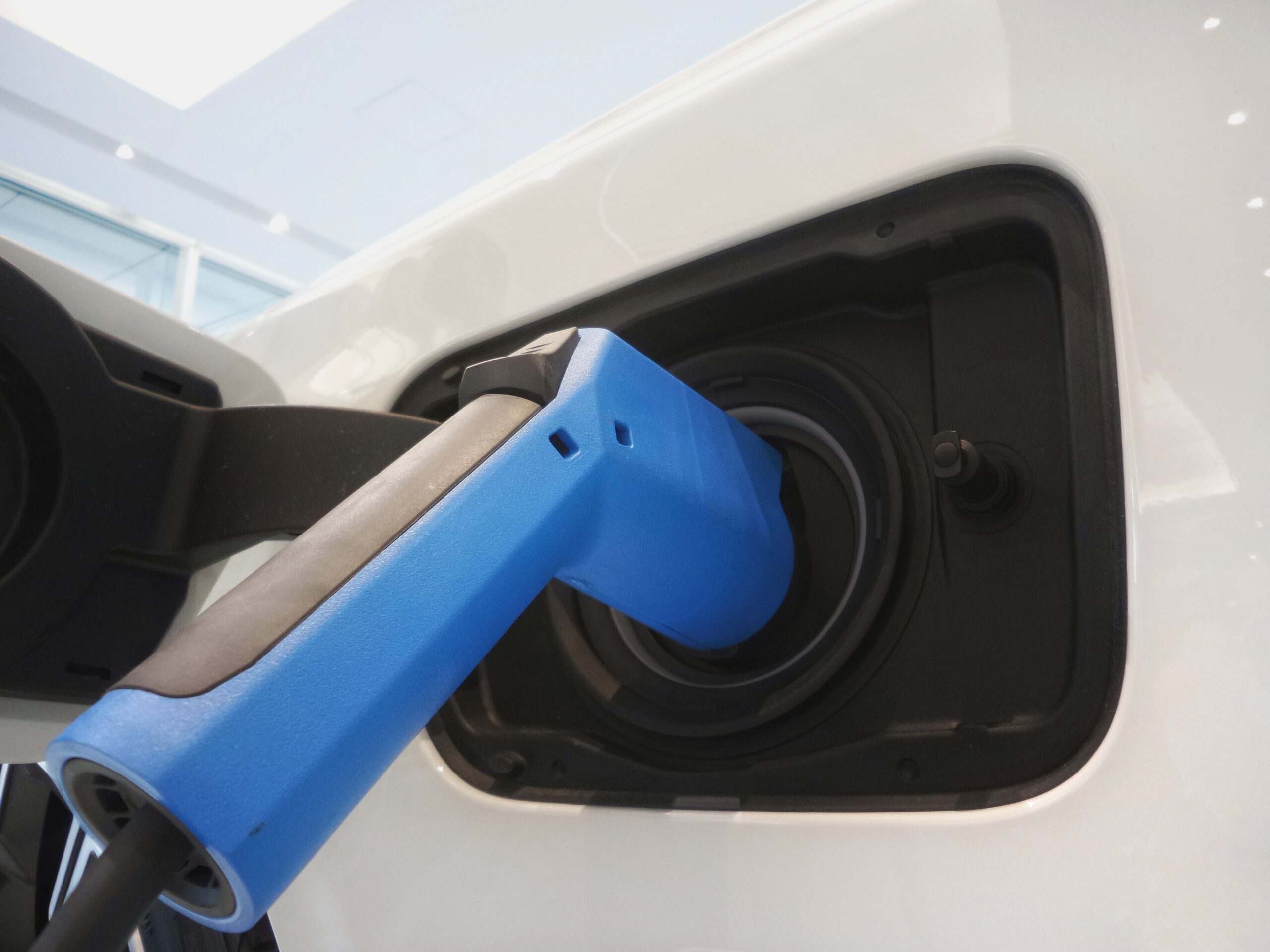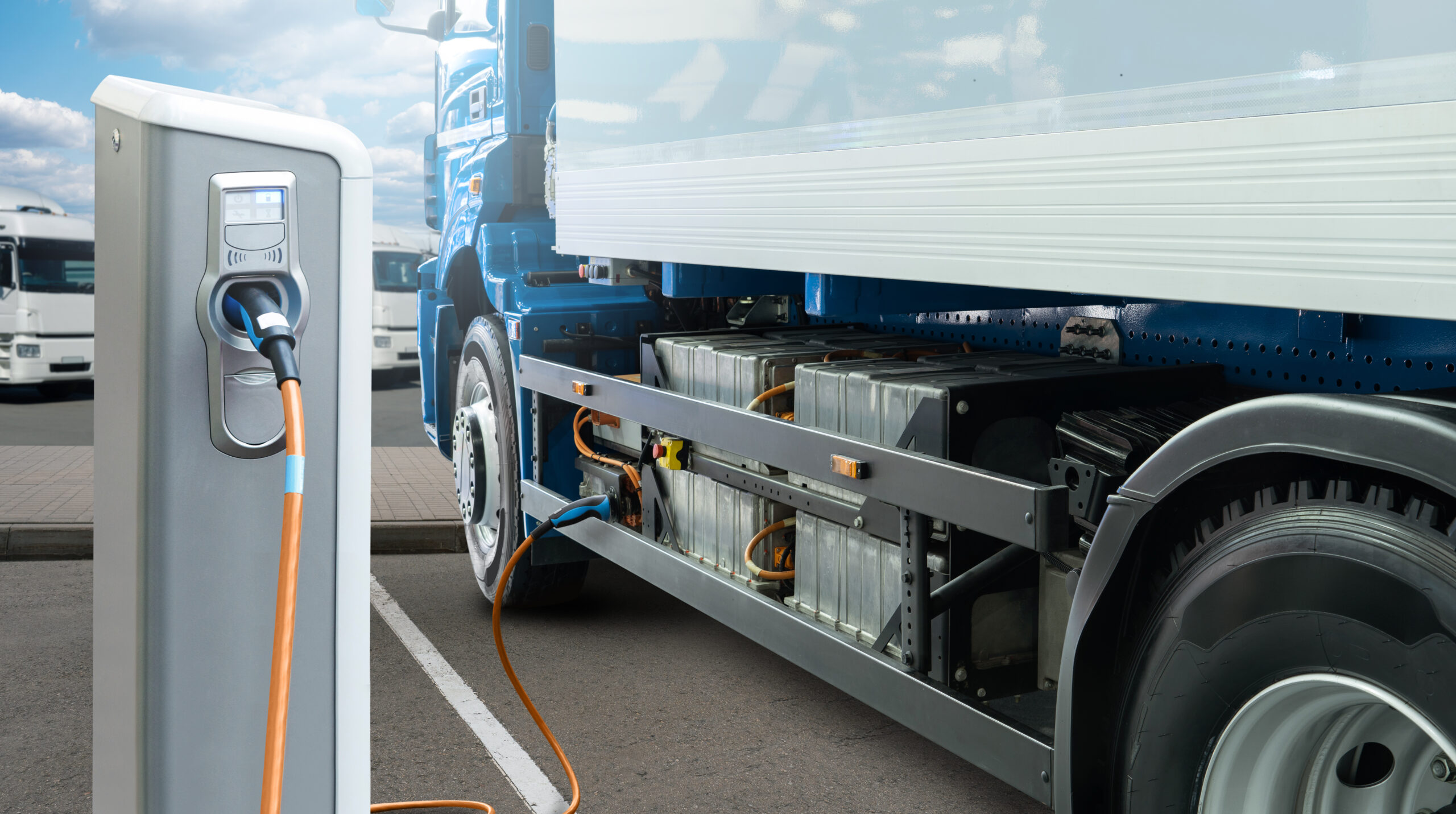More and more fleets are adding electric vehicles (EVs) to their lineup. But is that the best option? Are they as cost-efficient as internal combustion engine (ICE) vehicles? And where does hybrid come into all of this?

Choosing your next big buy is no small task, and with so many options on the market, it’s understandable some fleet managers are feeling a bit out of their depth. Understanding the differences is key to making the best decision for your fleet. To help you make the right choice, here are some tips.
ICE, Electric, and Hybrid Explained
ICE: ICE refers to conventional engines that use gasoline or diesel. They are usually cheaper to purchase initially but more expensive in the long term due to their need for fuel.
Electric: Electric vehicles run only off the energy stored in their batteries, which are charged by being plugged into an outlet or generator. This type of vehicle is generally more expensive to purchase, but you’ll save on gas and reduce emissions from your fleet over time.
Hybrid: A hybrid vehicle is powered by the combination of a traditional gasoline or diesel engine and an electric motor that runs on a battery.
A Quick Overview
- In general, ICE vehicles have more power than hybrids and EVs, but you’ll see higher maintenance and running costs. They tend to be cheaper up front, but this is changing as EV prices drop.
- Electric vehicles come with a higher initial cost and can’t travel as far per charge as a hybrid or conventional engine does per tank, but you do save money on fuel and maintenance.
- Hybrids offer better fuel economy, benefiting a fleet’s monthly mileage numbers compared to ICE vehicles, even though they generally cost more initially.
With these different characteristics of each, it’s important to consider all options carefully before taking any action. Here are more things to consider.
What’s My Business Case?
A look at operational costs shows that hybrids come out ahead of ICE vehicles, but only if you drive them long enough to make the payback work (7 years or more of use).
The reason for this is that hybrids are more expensive to purchase than standard gasoline engines. So, while they save money on fuel, their higher initial cost means you need to get more value from them before the savings add up.
If you’re thinking about an ICE vehicle, you’ll want to consider things like maintenance costs and the vehicle’s fuel efficiency. You’ll also want to factor in the price of fuel when looking at total cost of ownership.

If you have your eye on an EV, consider the savings in fuel costs and maintenance, as well as things like home charging and vehicle range. Efficiencies in these areas will offset the higher initial purchase price.
When it comes to hybrids and EVs, both show advantages over ICE engine vehicles—but only when considering certain factors, including operating and maintenance costs. In all three cases—hybrid, ICE cars, or EVs—the larger the fleet, the more compelling the financial argument becomes.
Why Fleets Are Adopting EVs (and Why You Should Consider It Too)
More and more fleets are turning to electric vehicles. Why? They offer a compelling case from both an environmental and cost perspective.
The costs can’t be ignored
These days, the benefit of EVs is more than simply being eco-friendly.
“Even if you have to pay more up front, or even if your monthly rental is a little higher, the reduced running cost through electricity is much cheaper than petrol or diesel; there is a reduced service, maintenance, and repair (SMR) cost from the fact there are fewer mechanical working parts, so there is less to replace on every service, and that can change the perception of pricing in the customers’ minds,” says Helen Lees, head of electric vehicles and connected services at Groupe PSA.
Every year, these savings add up. The technology is still relatively new, but the numbers are attractive enough to make it an enticing choice for any fleet that can afford it.
What about the range? Despite what you’ve heard, electric vehicles can go multiple days without recharging under some conditions. Some vehicles are achieving a range of 300+ miles per charge.
However, if drivers need to travel more than 300 miles during the day, a mid-shift charge will be necessary. This needs to be factored into your calculations, including both the time involved and access to charging points.
Recent legislation makes investing in petrol vehicles a risk. The US is now severely restricting what automakers can produce, and as a result, many have started developing electric vehicles that get more miles per charge while phasing out their gas vehicles.
So, if you’re looking at buying new vehicles in the next few years, consider an electric option—by that time, they’ll likely be able to go even farther than traditional petrol vehicles on one charge.
How Fleet Complete Can Help
GPS-enabled fleet management and asset tracking software can help you work out whether it’s time to go electric by comparing vehicle costs and helping you optimize your fleet’s performance. Let the software automatically track your trip mileage, then export it into a report for your entire fleet. From there, you can calculate the range (how long you can drive before you need to charge) and the cost per unit (in this case, miles).
Learn more about how Fleet Complete can help you make the move to electric by requesting our Fleet Complete demo.








